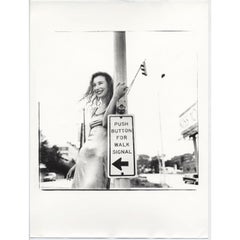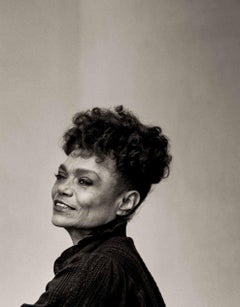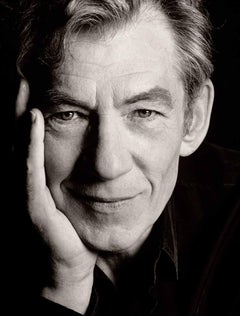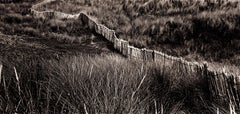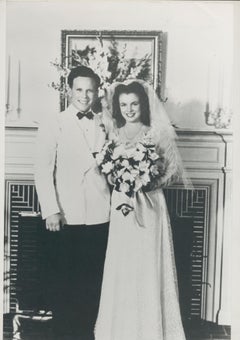Black and White Photography
1990s Photorealist Black and White Photography
Silver Gelatin
1990s Contemporary Black and White Photography
Archival Pigment
1990s Pop Art Black and White Photography
Silver Gelatin
1990s Contemporary Black and White Photography
Archival Pigment
1990s Contemporary Black and White Photography
Photographic Film, Archival Paper, Black and White, Giclée, Pigment, Arc...
1940s Modern Black and White Photography
Black and White
1990s Contemporary Black and White Photography
Archival Ink, Archival Paper, Silver Gelatin
1990s Contemporary Black and White Photography
Silver Gelatin
1940s Modern Black and White Photography
Silver Gelatin
1940s Other Art Style Black and White Photography
Black and White, Digital Pigment
1990s Contemporary Black and White Photography
Archival Pigment
1990s Contemporary Black and White Photography
Black and White, Archival Pigment
1940s Contemporary Black and White Photography
Archival Ink, Archival Paper, Archival Pigment
1940s Modern Black and White Photography
Black and White, Silver Gelatin
1990s Contemporary Black and White Photography
Archival Pigment
1940s Contemporary Black and White Photography
Archival Ink, Archival Paper, Archival Pigment
1990s Other Art Style Black and White Photography
Silver Gelatin
1990s Contemporary Black and White Photography
Archival Pigment, Black and White
1990s Contemporary Black and White Photography
Black and White, Archival Pigment
1990s Contemporary Black and White Photography
Black and White, Archival Pigment
1940s Contemporary Black and White Photography
Black and White
1990s Contemporary Black and White Photography
Archival Pigment
1990s Contemporary Black and White Photography
Silver Gelatin
1990s Contemporary Black and White Photography
Silver Gelatin
1990s Contemporary Black and White Photography
Silver Gelatin
1990s Contemporary Black and White Photography
Silver Gelatin
1990s Contemporary Black and White Photography
Black and White
1990s Contemporary Black and White Photography
Black and White
1990s Modern Black and White Photography
Black and White, Archival Pigment
1990s Contemporary Black and White Photography
Archival Paper, Archival Pigment, Photographic Film, Black and White, Pi...
1990s Contemporary Black and White Photography
Archival Pigment
1990s Contemporary Black and White Photography
Archival Pigment
1990s Contemporary Black and White Photography
Silver Gelatin
1990s Contemporary Black and White Photography
Archival Paper, Black and White, Archival Pigment, Photographic Film, Pi...
1940s Modern Black and White Photography
Black and White, Silver Gelatin
1990s Contemporary Black and White Photography
Archival Paper, Black and White, Archival Pigment, Photographic Film, Pi...
1990s Realist Black and White Photography
Photographic Paper
1990s Contemporary Black and White Photography
Black and White, Archival Pigment
1990s Contemporary Black and White Photography
Archival Paper, Black and White, Archival Pigment, Photographic Film, Gi...
1940s Modern Black and White Photography
Black and White, Silver Gelatin
1990s Other Art Style Black and White Photography
Silver Gelatin
1990s Contemporary Black and White Photography
Archival Pigment
1990s Modern Black and White Photography
Black and White, Archival Pigment
1990s Contemporary Black and White Photography
Archival Pigment
1990s Contemporary Black and White Photography
Black and White, Archival Pigment
1990s Contemporary Black and White Photography
Inkjet
1990s Contemporary Black and White Photography
Black and White, Archival Pigment
1990s Contemporary Black and White Photography
Black and White, Archival Pigment
1990s Contemporary Black and White Photography
Black and White, Archival Pigment
1990s Contemporary Black and White Photography
Black and White, Archival Pigment
1990s Contemporary Black and White Photography
Inkjet
1990s Contemporary Black and White Photography
Archival Pigment
1990s Modern Black and White Photography
Black and White, Archival Pigment
1990s Contemporary Black and White Photography
Silver Gelatin
1990s Contemporary Black and White Photography
Photographic Film, Archival Paper, Black and White, Giclée, Pigment, Arc...
1990s Modern Black and White Photography
Archival Pigment
1940s Modern Black and White Photography
Silver Gelatin
1990s Modern Black and White Photography
Silver Gelatin
Shop Black and White Photography
There’s a lot to love about black and white photography.
The unique and timeless quality of a black and white photograph accentuates any room. Some might argue that we’re naturally drawn to color photography because it’s the world we know best. This is a shared belief, particularly in the era of camera-phone photography, editing apps and the frenetic immediacy of sharing photos on social media. But when we look at black and white photography, we experience deep, rich shadows and tonal properties in a way that transfixes us. Composition and textures are crisp and engaging. We’re immediately drawn to the subjects of vintage street photography and continue to feel the emotional impact of decades-old photojournalism. The silhouettes of mountains in black and white landscape photography are particularly pronounced, while portrait photography and the skylines of urban cityscapes come to life in monochrome prints.
When decorating with fine photography, keep in mind that some color photographs may not be suitable for every space. However, you can be more daring with black and white photos. The gray tones are classic, sophisticated and generally introduce elegance to any corner of your home, which renders black and white prints amazingly versatile.
Black and white photography adapts to its surroundings like a chameleon might. A single large-scale black and white photograph above the sofa in your living room is going to work with any furniture style, and as some homeowners and designers today are working to introduce more muted tones and neutral palettes to dining rooms and bedrooms, the integration of black and white photography — a hallmark of minimalist decor — is a particularly natural choice for such a setting.
Another advantage to bringing black and white photography into your home is that you can style walls and add depth and character without worrying about disrupting an existing color scheme. Black and white photographs actually harmonize well with accent colors such as yellow, red and green. Your provocative Memphis Group lighting and bold Pierre Paulin seating will pair nicely with the black and white fine nude photography you’ve curated over the years.
Black and white photography also complements a variety of other art. Black and white photos pair well with drawings and etchings in monochromatic hues. They can also form part of specific color schemes. For example, you can place black and white prints in colored picture frames for a pop of color. And while there are no hard and fast rules, it’s best to keep black and white prints separate from color photographs. Color prints stand out in a room more than black and white prints do. Pairing them may detract attention from your black and white photography. Instead, dedicate separate walls or spaces to each.
Once you’ve selected the photography that best fits your space, you’ll need to decide how to hang the images. If you want to hang multiple photos, it’s essential to know how to arrange wall art. A proper arrangement can significantly enhance a living space.
On 1stDibs, explore a vast collection of compelling black and white photography by artists such as Mark Shaw, Jack Mitchell (a photographer you should know), Berenice Abbott and David Yarrow.
Read More
Some of the Best Beatles Photos Were Taken by Paul McCartney
A trove of recently unearthed personal photos adds another dimension to the abundance of press images of the Fab Four.
This Photo of Big Sur Reveals the Awesomeness and Intimacy of Nature
When a beachcomber accidentally stepped in front of Jeffrey Conley’s camera, a perfect moment was captured.
Queen Elizabeth’s Life in Photos
She was one of the most photographed women in history, but the world’s longest-reigning queen remained something of a mystery throughout her decades on the throne.
Photographer to Know: William Klein
The noted lensman brought a bold sense of irony to fashion photography in the 1950s and '60s, transforming the industry. But his work in street photography, documentary filmmaking and abstract art is just as striking.
David Yarrow Tells Us the Tales behind His Wild, Wild Photography
To capture many of the cinematic images in his new show, the famed photographer traveled to the still-rugged parts of Alaska and the Rocky Mountains, shooting supermodels and carnivores alike.
Lori Grinker’s Artful Photographs of a Young Mike Tyson Are a Knockout!
The New York photographer tells us how an encounter with the then-13-year-old boxer led to a decade-long project that saw them both go pro.
John Dolan’s Photographs Capture the Art and Soul of a Wedding Day
In a new book compiling 30 years' worth of images, the photographer reveals that it's the in-between moments that make a wedding special.
Jonathan Becker Reflects on His Decades of Photographing A-Listers for ‘Vanity Fair’
After 30-plus years with the storied magazine, the photographer shares the tales behind some of his most famous (and often surreal) pictures.
